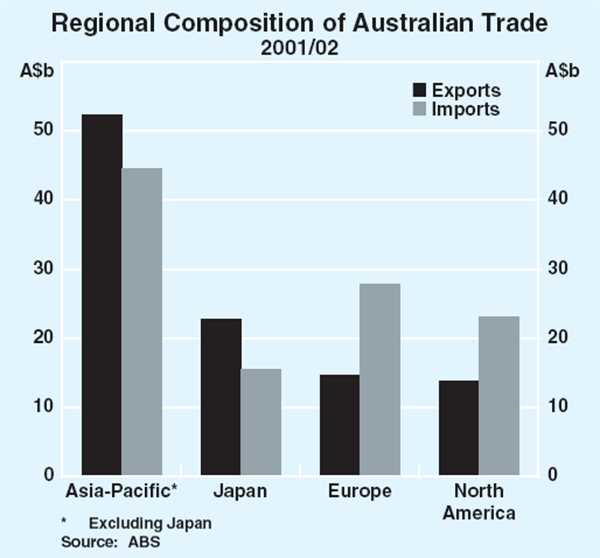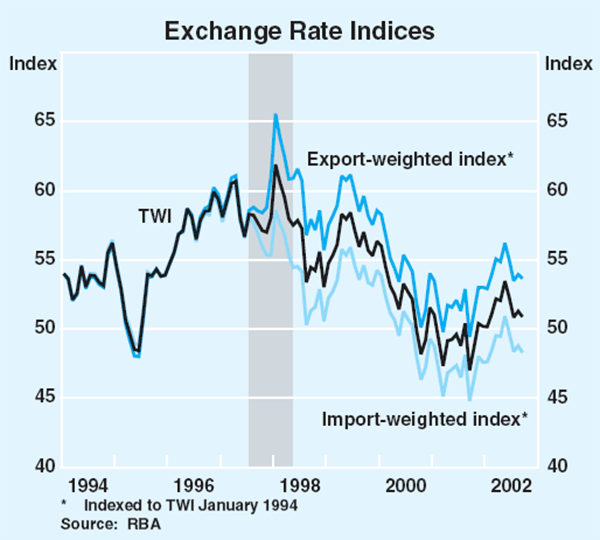RBA Bulletin January 1998Alternative Measures of the Effects of Exchange Rate Movements on
Post on: 16 Март, 2015 No Comment

Archive
Reserve Bank Bulletin January 1998
Alternative Measures of the Effects of Exchange Rate Movements on Competitiveness
In the past year there have been some sharp movements in exchange rates, involving substantial depreciation of a number of East Asian currencies and an appreciation of the US dollar against other major currencies. The Australian dollar has declined against the US dollar, but has appreciated substantially on average against the East Asian currencies.
The economic turmoil in East Asia will affect other economies in two ways. First, some of the contraction of demand and growth in East Asia will tend to spill over to other countries that export into the region. Second, the exchange rate movements that have taken place will have potential implications for prices and the international competitiveness of countries that trade with East Asia. This article focuses on the second of these issues, with a particular emphasis on the divergence in exchange rate movements over the past year.
The two standard indicators of the Australian dollar exchange rate are the bilateral rate against the US dollar and the trade-weighted index (TWI) (Graph 1). The simplest approach of focusing only on a single bilateral rate, such as the $US/$A rate, is often quite misleading. In the past year, the Australian dollar has depreciated against the US dollar by around 20 per cent, but this clearly overstates the extent of any overall depreciation because it is in large part a reflection of US dollar strength. The US dollar has been the strongest of the major world currencies over this period, rising in trade-weighted terms by over 10 per cent. In general, it is more useful to look at the exchange rate in terms of more broadly based measures that take a range of bilateral rates into account. The most commonly used measure, the TWI, has been relatively stable, with the depreciation against the US dollar (and, to a lesser extent, against other major currencies) being offset by large appreciations against the currencies of a number of important East Asian trading partners.
Graph 1
Other more specialised exchange-rate indices can also be constructed: for example, separate export- and import-weighted indices, or indices designed to reflect competition with third countries rather than just bilateral trade shares. In most circumstances, particularly when the Australian dollar is moving in the same direction against most other currencies, the alternative exchange-rate indices tend to give much the same answer, and so it is reasonable to rely on the best known of them the TWI. However, differences can become significant when there are sharp divergences between movements in the bilateral rates, as has been the case recently. In these conditions, any single indicator of exchange-rate competitiveness is likely to become less useful, and it becomes more important to look carefully at a range of alternative indicators.
There are several mechanisms by which bilateral exchange rate movements such as those seen recently might have significant economic effects that are not captured in the TWI. These include:

- divergences between export, import and aggregate trade-weighted exchange rates;
- the role of the US dollar as a currency of denomination in international trade;
- longer-term pricing of commodity exports in terms of the major world currencies; and
- the importance of bilateral exchange rates vis—vis competitor countries with whom we might have relatively little direct trade.
The discussion below analyses these issues and, in a number of instances, presents some alternative indicators of the effects of divergent exchange rate movements. The analysis suggests that, for a given level of the TWI, the recent combination of depreciation against the US dollar, and appreciation against the East Asian currencies, is equivalent to a modest net gain in Australias average level of competitiveness.
Divergences between Export, Import and Aggregate Trade-weighted Exchange Rates
The weights used in construction of the TWI are averages of export and import weights. As a first step in looking at recent exchange rate movements it is useful to consider separately the behaviour of export- and import-weighted exchange-rate indices. In broad terms, the main difference between these weighting patterns is that an export-weighted index assigns relatively high weights to currencies of East Asian countries, reflecting their importance as export destinations, while an import-weighted index gives relatively high weights to the United States and Europe. A summary is presented in Table 1.
Table 1: Trade Weights and Currency Movements Per cent














